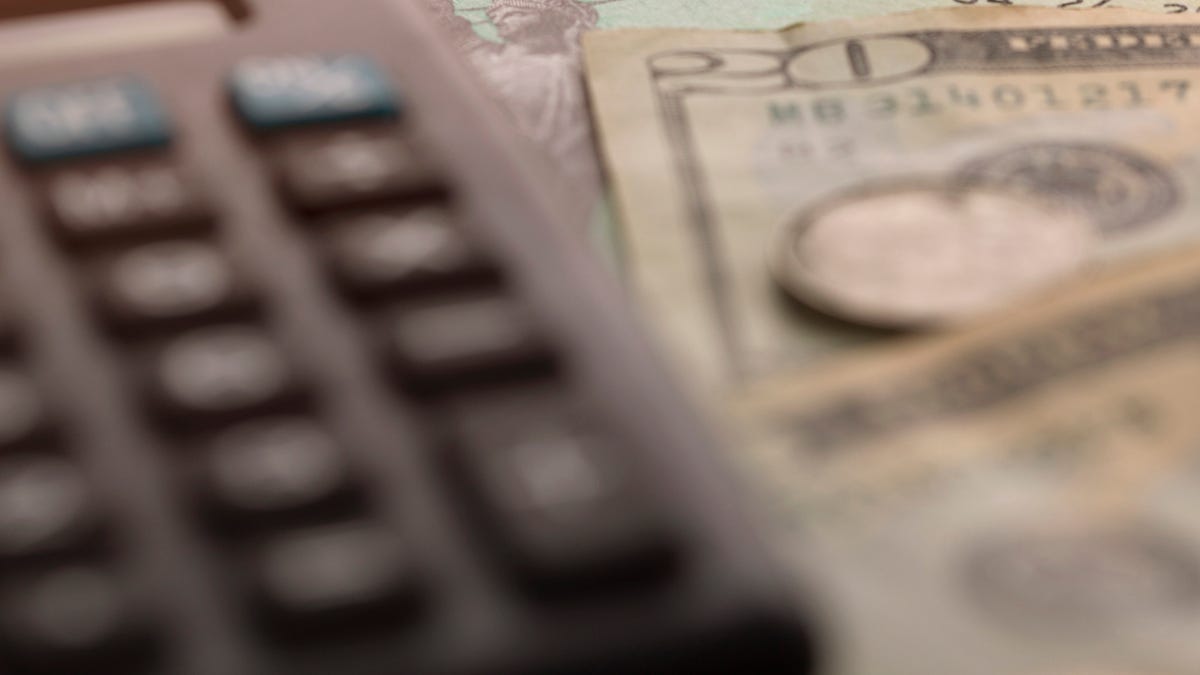LATEST FINANCIAL NEWS
Who gets the third stimulus check, and when? Your COVID-19 relief questions, answered
Susan Tompor
| Detroit Free Press
VIDEO: When will get your stimulus check? Chuck Schumer explainsSen. Chuck Schumer spoke on the Senate floor March 11, 2021, about the passage of the latest stimulus package that include $1,400 checks for most Americans.Joseph Spector, New York State TeamThe third round of stimulus cash could start arriving as soon as this weekend for those with direct deposit, giving many an extra financial lift after being ground down by a year-long pandemic. And we’ll know more specifics soon now that President Joe Biden signed the American Rescue Plan relief package into law Thursday afternoon, a day sooner than had been expected.Biden said the relief package was “about rebuilding the backbone of this country” and giving those who are struggling a “fighting chance.” Thursday marked the one-year anniversary of when the World Health Organization declared COVID-19 a global pandemic.Jen Psaki, White House press secretary, told reporters in Washington on Thursday that people will start seeing direct deposit of the stimulus checks as soon as this weekend. But the latest stimulus money — up to $1,400 per person who qualifies — isn’t the only part of the massive $1.9 trillion COVID-19 relief package that will help many families who may have trouble paying their bills.Relief plan impact on families: From child care to school reopenings, $1.9T COVID relief package gives a financial lift to America’s struggling familiesFiling for a deceased relative: Can I get a COVID relief payment for a spouse, relative who died?”For people who are financially stressed, there’s a lot of good news for them,” Kathy Pickering, chief tax officer at H&R Block, said in an interview Thursday. We’re looking at some key tax-related benefits for many people who lost jobs in 2020 and some families with young children. Here’s how the latest relief package could hit your wallet and what you need to know: When will third stimulus check arrive? If we know anything about stimulus money by now, we’ve come to learn that it all doesn’t arrive at the same time. That could be true this time around, too, but there aren’t any details yet. Tax professionals and others continue to wait for clarity from the Internal Revenue Service about the specifics involved with the rollout. If the IRS sends you that money via direct deposit, you’ll likely be among the first to receive it, possibly as soon as this weekend, the White House says.As part of the direct deposit process, the U.S. Treasury would start to send electronic messages to banks on Friday but bank accounts would not see any extra cash available immediately. It’s expected that March 17 would be the effective date when the Treasury actually transfers the money, according to industry experts. More than 100 million payments are expected to be payable on March 17 via direct deposit.Consumers should watch their bank accounts in the days ahead. More than 233 million stimulus payments were issued via direct deposit during the past two rounds of Economic Impact Payments.The first and second round of payments also involved 64.2 million stimulus checks and 11.6 million prepaid cards.Paper checks and prepaid Visa debit cards — which are expected to be part of the third stimulus program — would be sent in the regular mail and take a bit longer, through April at least, according to estimates by Garrett Watson, senior policy analyst for the Tax Foundation. The official word from the IRS Wednesday was that the agency was continuing to review its rollout plans for the American Rescue Plan Act of 2021. The IRS stated: “Additional information about a new round of Economic Impact Payments and other details will be made available on IRS.gov, once the legislation has been signed by the President.” Who gets the third stimulus check?The full $1,400 goes to single people earning up to $75,000. But it phases out quickly after that and is completely phased out for those earning more than $80,000. A full payment of $2,800 goes to a married couple filing a joint federal income tax return earning up to $150,000. The phaseout begins after that and ends at $160,000. The IRS will use the 2019 tax return information or 2020 tax return information, based on what they have available, to calculate the payouts that go out soon. How much will I get?Again, the higher you are above the new threshold for the third stimulus, the smaller your payout will be this time around.Pickering ran these examples for me.Take a single filer who has an adjusted gross income of $78,000. That single filer could expect to see the third Economic Impact Payment turn out to be around $560, a 60% reduction from the maximum $1,400 payout. Someone who is filing as head of household with a college-age dependent and $116,00 in adjusted gross income could expect an Economic Impact Payment of around $1,493 — a tiny bit more than half of the $2,800 maximum. (Under the latest program, the third stimulus payment would phase out completely for heads of household at $120,000.) Will I get money for my daughter in college? Possibly. Under the latest program, additional payments could go to all dependents, not just children 16 and younger.As part of the third stimulus, all dependents qualify for up to an extra $1,400. As a result, college students age 23 or younger could qualify, or so could elderly parents living with you. For many families with children age 17 and older, the third stimulus payout could prove to be more generous than in the past. That would particularly be true, for example, if a married couple qualifies for the full $2,800 because their adjusted gross income falls under the $150,000 threshold.Won’t some families be shut out? Yes, some families who make more money will see a small payout or no payout. Roughly 6.5 million households that received money in the past now won’t be able to bank on receiving either the full $1,400 payment or even a partial payment when it comes to the latest Economic Impact Payments, according to estimates by the nonprofit, non-partisan Tax Foundation. The stimulus programs always cut off some higher-income families, based on adjusted gross income. But the third program is more laser focused on income. Singles earning $80,000 or more won’t get the third stimulus payout. Married couples earning $160,000 or more won’t get money, either. How will the jobless get a new tax break? The latest stimulus package to be signed into law creates a new tax break for tens of millions of workers who received unemployment benefits in 2020.Tens of millions of people received jobless benefits last year after restaurants, factories and other places of business shut down during the pandemic. And many will likely benefit from this new tax break. “It’s retroactive. This is for 2020,” Pickering said. “This is great news.” Until now, jobless benefits had to be reported as taxable income and many would likely owe federal income taxes on those benefits. As part of the American Rescue Plan, many taxpayers would not be required to pay taxes on up to $10,200 in unemployment benefits received last year.The exclusion is up to $10,200 of jobless benefits for each spouse for married couples.So it’s possible that if both lost work in 2020, a married couple filing a joint return might not have pay federal income taxes on up to $20,400 in jobless benefits. It can be a little confusing. So, for example, if one spouse received $15,000 in jobless benefits but the other received just $1,000 in unemployment compensation in 2020, then the exclusion for tax purposes that the couple would receive would be $11,200 – not $16,000.Not everyone will be covered. The special provision to waive taxes on some unemployment income applies to those who made less than $150,000 in adjusted gross income in 2020.Pickering gave this example of potential savings. Take a single filer who worked for part of 2020 but who had been jobless for a short time last year. Assume a single taxpayer had an adjusted gross income of $75,000 in 2020. And let’s assume that the only jobless benefits they received totaled $10,200 when they were out of work.Such a taxpayer could now exclude the $10,200 in jobless benefits. Pickering said that single filer would be in the 22% bracket, so the filer would save about $2,244 in taxes, thanks to the new exclusion for some jobless benefits. Obviously, some people already filed their taxes and now may need to see what other steps they’d have to take. We’ll likely here more guidance from the IRS on that in the days ahead. It may be necessary to file an amended return.If you had taxes withheld on jobless benefits, the federal taxes are withheld at a 10% rate. On $10,200 in jobless benefits, we’re talking about $1,020 in federal taxes that would have been withheld. That’s money that could go to cover what income taxes you owe — or possibly lead to a bigger federal income tax refund. Many people didn’t withhold taxes from their unemployment checks, so they’re still looking at paying whatever taxes they might owe on unemployment benefits that exceed the new $10,200 waiver for singles and for each spouse on a married filing joint return. Michigan alone saw 2,361,468 people receive unemployment benefits in 2020, according to the state Unemployment Insurance Agency.Michigan is a current conformity state so up to $10,200 will be excluded from Michigan income tax too, Pickering noted. Those who faced lengthy unemployment in 2020, though, could have received far more in benefits and could still owe some taxes on their unemployment benefits. This is just a partial tax forgiveness measure. In some cases, if people didn’t have enough taxes withheld on jobless benefits, they could still face penalties and interest. Michigan announced in February a modest tax break for those who were jobless in 2020 and collected unemployment benefits but did not have enough tax dollars withheld last year. If you collected state unemployment but did not pay enough income taxes into the system last year, the state of Michigan isn’t going to charge you a penalty or interest related to any underpayment of estimated taxes. The Michigan Department of Treasury has granted an automatic waiver of all penalties and interest related to underpaid estimated tax payments owed by taxpayers who received unemployment benefits in 2020.Under Michigan state law, taxpayers are required to pay quarterly estimated tax payments when the annual tax due is expected to exceed $500 or more. Taxpayers who fail to pay an estimated quarterly tax payment are typically subject to penalties and interest.What’s new with the Child Tax Credit? The changes relating to an expanded Child Tax Credit won’t impact your 2020 tax return. But they will help in 2021.The Child Tax Credit had offered a maximum of up to $2,000 per child. But under the new rules, a $3,600 child tax credit is available for newborns through 5-year-old children. And a $3,000 child tax credit is available for children ages 6 through 17. Under current law, households with no income tax to offset are limited to $1,400 in refundability. But now the Child Tax Credit will be fully available and refundable to households with no income, unlike the Child Tax Credit’s current design, according to the nonprofit Tax Foundation. There are two phase-out levels based on income.Parents can receive the full credit if their adjusted gross income is less than $75,000 if single, less than $150,000 if married filing joint or less than $112,500 for head of household filers. After that, the credit is reduced to $2,000 per child. Then the credit is phased out completely for parents with an adjusted gross income starting with $200,000 if single and $400,000 if married filing jointly. Another plus: Families would not have to wait until next year when they file their 2021 federal income tax returns. Instead, they would be able to get checks of up to $300 per child per month beginning later in the second half of this year.Contact Susan Tompor via stompor@freepress.com. Follow her on Twitter @tompor.









